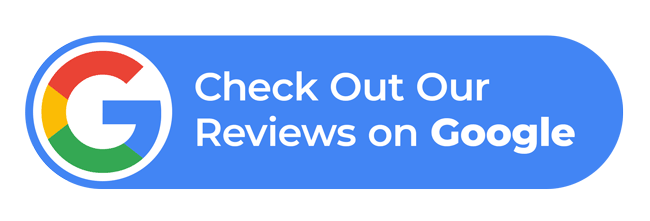AI is changing the way people look for information. Instead of scrolling through a list of links, tools like Google’s Search Generative Experience, ChatGPT, and Perplexity now deliver quick summaries pulled from across the web. That shift means businesses need to approach SEO in a new way.
Generative AI Optimization is about more than rankings and keyword optimization. It makes sure your content is picked up, presented accurately, and trusted enough to be cited in generated answers.
This change is pushing companies to adjust their SEO strategies, with a stronger focus on credibility and clarity so their brand is included when customers search in new ways. Use the links below to explore the areas that matter most for your business:

What Is Generative AI and Why Does Optimization Matter?
Generative AI SEO is the practice of optimizing your content so AI tools can easily find, understand, and cite it when crafting conversational answers for users.
Traditional search results list clickable links. Generative platforms like Google’s AI Overviews, ChatGPT browsing, and Perplexity scan the web to create direct, human-readable summaries. This means your content might be featured—or overlooked—without the user ever clicking a link.
Example: A user might ask ChatGPT, “What are the benefits of schema markup?” Instead of listing URLs, ChatGPT generates a paragraph answer and sometimes cites the source it used. Your goal is to ensure your content is the one quoted.
How Do Generative Engines Analyze Content?
Generative AI is reshaping how people search and absorb information, and it doesn’t operate the same way as traditional search engines. Instead of simply crawling pages and matching keywords, these systems look for deeper signals that help them interpret and summarize content in useful ways. Understanding how this works can guide how you shape your content strategy.
Semantics Over Keywords
AI pays attention to meaning and context rather than exact keyword matches. It evaluates how words and ideas connect to answer user intent more naturally. Content that speaks directly to questions and uses clear, conversational language will perform better than text packed with repetitive keywords.
Entity and Brand Recognition
Platforms such as Claude and Perplexity build maps that connect topics, brands, people, and concepts. They lean on these connections to generate responses that feel relevant and authoritative. To be included in AI-driven summaries, your content should clearly show how your brand, products, and expertise fit into the broader topics users care about.
Content Clarity
Generative AI platforms tend to favor content that’s clear, factual, and easy to break down. When information is well-structured, it’s simpler for these systems to summarize, cite, and include in their answers. On the other hand, long-winded or overly promotional copy often gets overlooked. The takeaway is simple: focus on clarity and usefulness rather than just stuffing in keywords.
Put simply, your content needs to be genuinely helpful and easy to understand—not just optimized for keywords.
How to Optimize for AI Without Abandoning Traditional SEO
You don’t have to toss out your current SEO strategy, but it does need to evolve. Tools like Google’s Search Generative Experience, ChatGPT, and Perplexity look for content that is straightforward, organized, and rich in context. Here are a few practical ways to adjust your approach while still keeping the fundamentals of SEO in place:
Answer User Questions Directly
Structure headings around real search queries and provide concise answers beneath them. Aim for responses under 150 words so they’re easy for AI to turn into summaries. Each section should stand on its own as a useful snippet.
Create Content Clusters
Group related topics together. Start with a main “pillar” page that covers the big picture, then branch into supporting pages that go deeper on subtopics. This approach builds authority, strengthens internal linking, and makes it easier for AI to follow the connections.
Use Structured Data
Schema markup (like FAQ, HowTo, or Product) gives machines extra context about your content. It signals what type of information you’re providing, making it more likely to be surfaced when AI tools look for reliable sources.
Keep Content Up To Date
Generative platforms favor up-to-date information. Revisit older content and update it with current stats, new processes, or recent trends. Regular updates signal that your content is trustworthy and relevant..
Maintain Technical SEO Hygiene
Fast-loading pages, mobile responsiveness, clean URL structures, and proper header hierarchy still matter. While AI engines may focus on content quality, technical performance still affects whether your site gets crawled, indexed, and ranked in the first place.


Balancing Traditional SEO and Generative Engines
You don’t need to abandon traditional SEO to adapt to Generative AI SEO—in fact, the two work best together. Traditional SEO remains essential for driving organic rankings, attracting traffic, generating leads, and reinforcing brand trust—factors that AI engines often consider when choosing credible sources. Generative AI SEO isn’t a replacement; it’s an evolution. Strong traditional rankings can actually improve your chances of being featured in AI-generated responses. And with over 13% of Google queries now showing AI Overviews, it’s clear that businesses need to prepare for both the classic search results and the emerging AI-driven layer.
Work With an SEO Agency That Understands AI
Search is changing fast—and your strategy should keep up. Whether you’re focused on ranking in Google or showing up in tools like Perplexity or ChatGPT, Funnel Boost Media helps businesses build lasting visibility. As a results-driven SEO agency, we work with clients across the U.S. to improve traditional rankings and prepare for the next generation of search.





